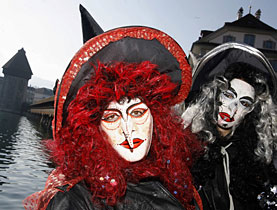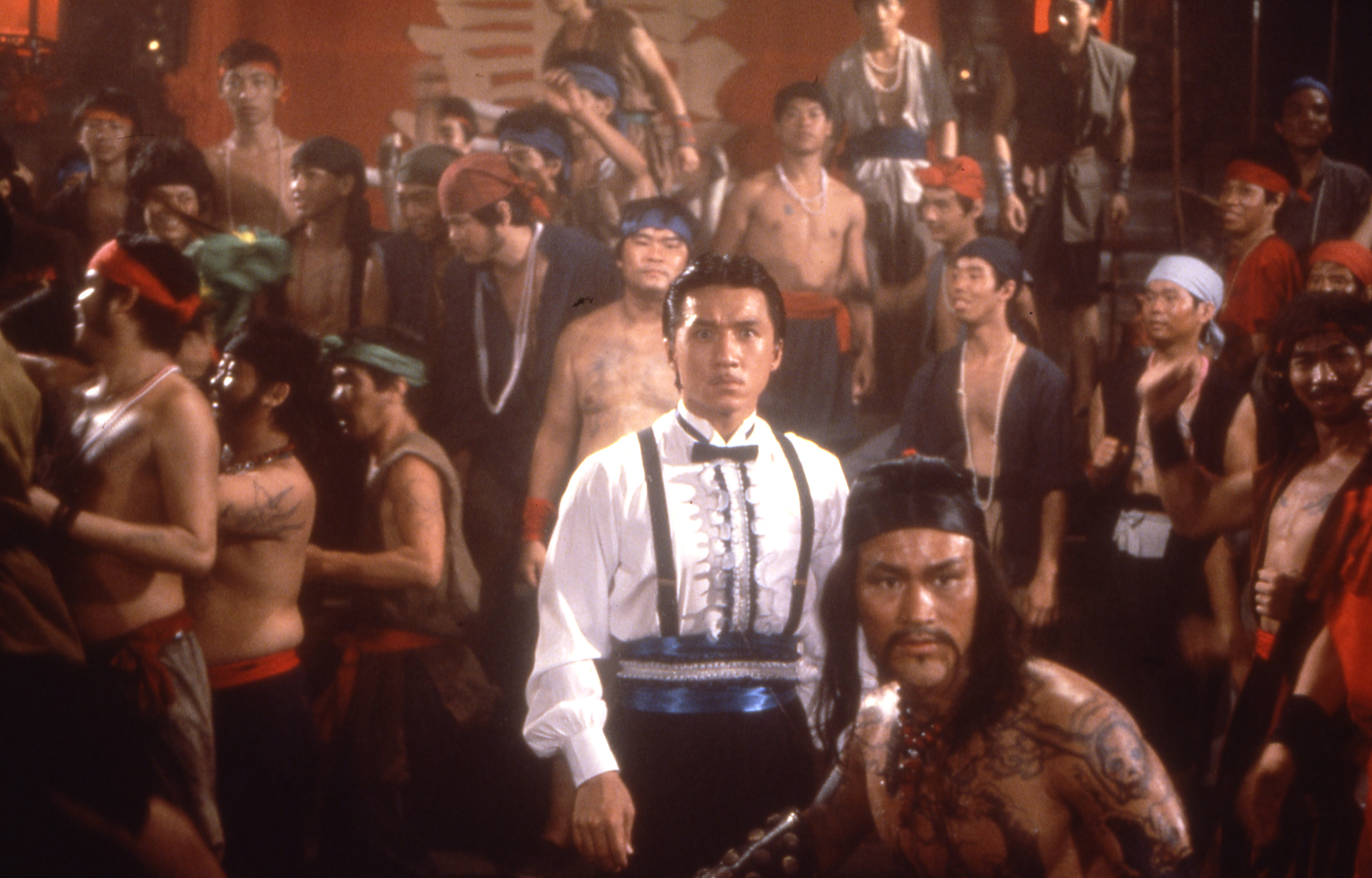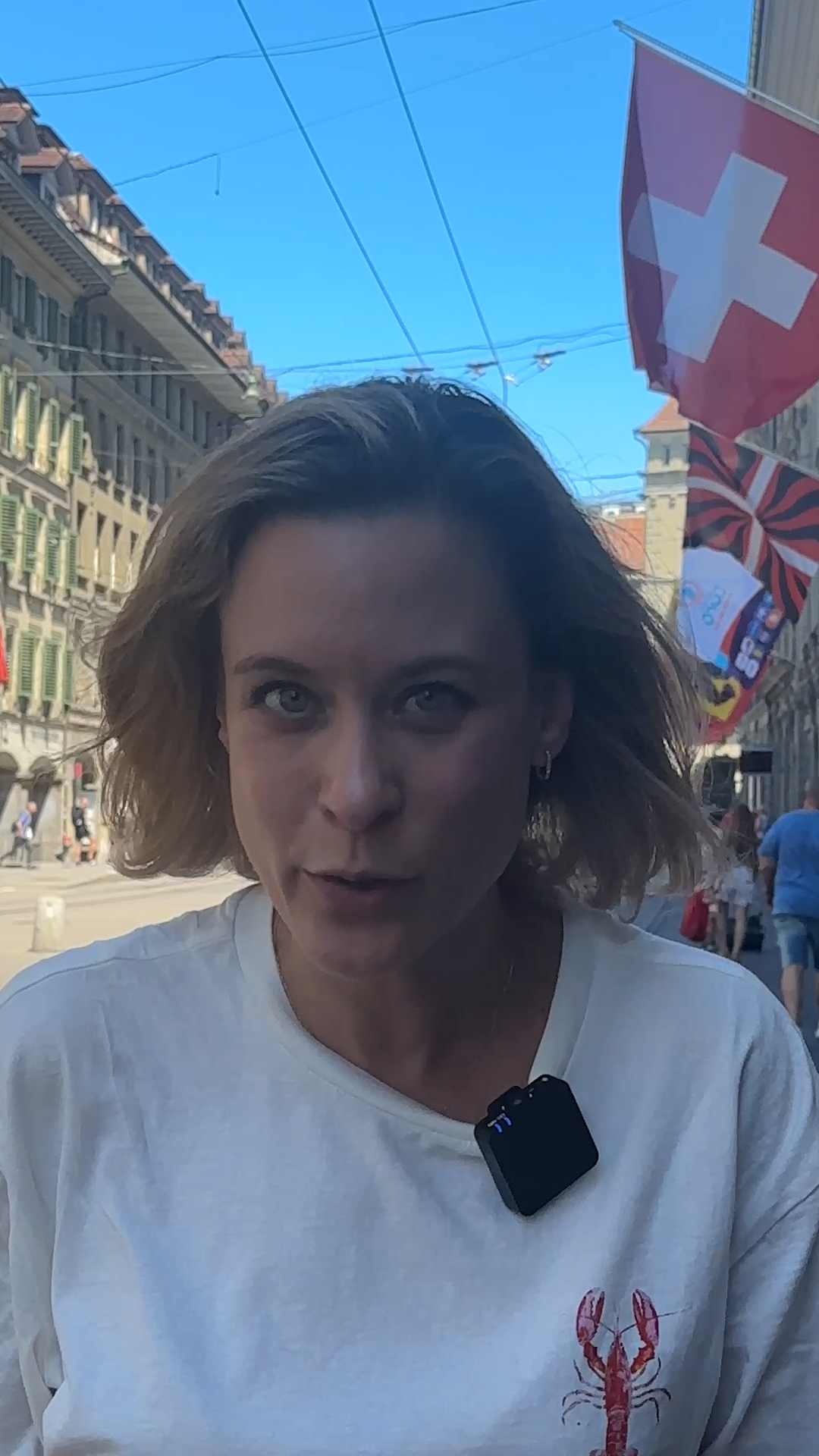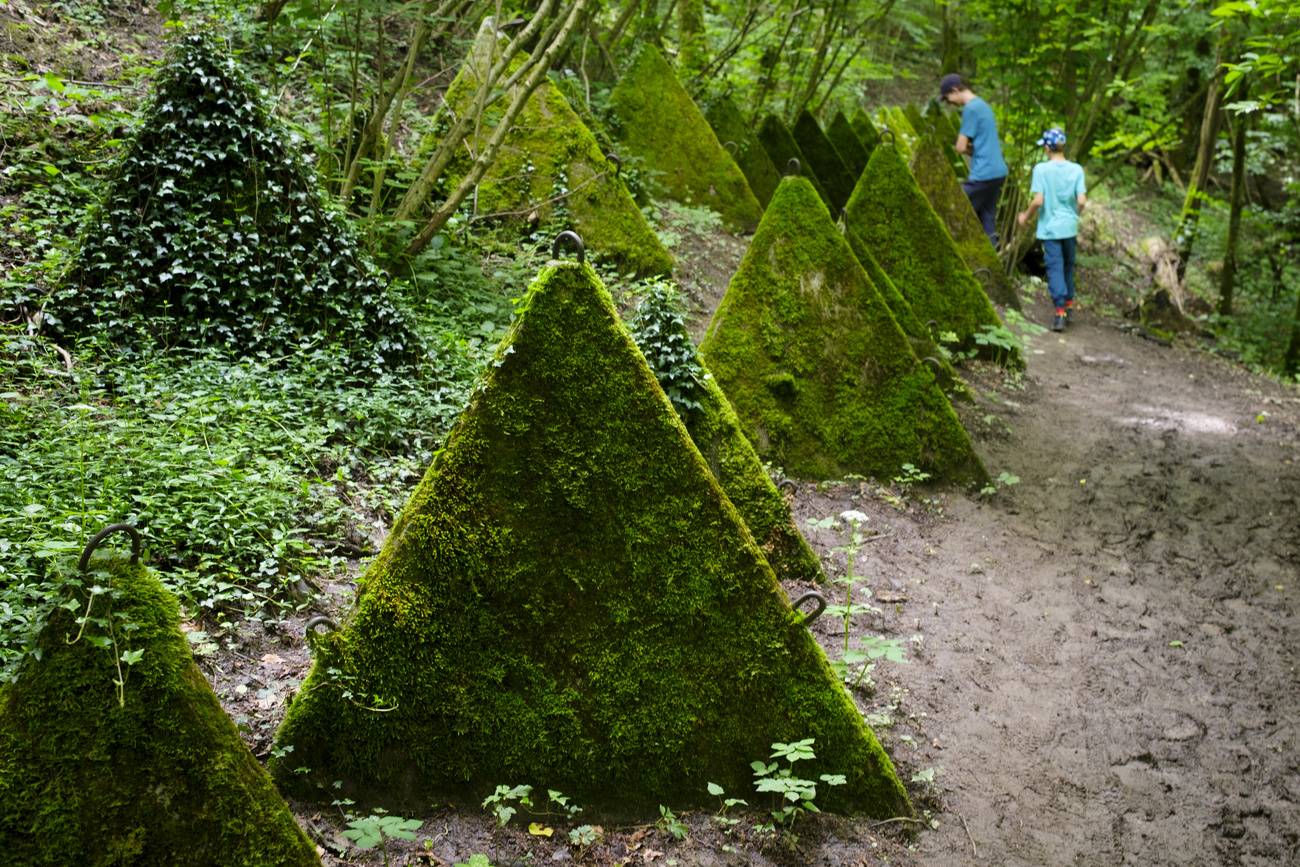
Swiss celebrate last blast before Lent

It's that time of year again and the Swiss are putting the final touches to their outlandish costumes and gearing up for days of carnival revelry.
The different language regions have different names for the pre-Lenten festivities and Roman Catholic and Protestant areas tend to have different styles. But the clownish essence of the event is the same all over the country.
The biggest festivities take place in German-speaking areas, where the wacky carryings-on go by the name of fasnacht (fast night). This is in reference to the eve of the 40-day fasting period in the Christian calendar between Ash Wednesday and Easter.
The term carnival – from the Latin “carne vale”, or “put away meat!” – is used in French and Italian-speaking Switzerland, although the cosmopolitan citizens of Zurich have rebranded the occasion there ZüriCarneval.
In French-speaking Switzerland, Payerne is the HQ of carnival, where it goes by the name of “Brandons”. Bellinzona is the place to be in Italian-speaking Switzerland. The party kicks off there with the handing over of the keys of the city to the so-called King Rabadan.
Basel, Lucerne and Solothurn in the German-speaking part of the country are the main centres for traditional processions and attract the most visitors.
But for those who prefer to stay local, every little hamlet in Switzerland seems to have its own version of fasnacht.
Cities such as Bern or Zurich, which formerly suppressed or banned the festival on religious grounds, are seeing a revival of fasnacht events. What straightlaced Protestant reformers like Zwingli and Calvin would have made of such frivolities is anyone’s guess.
The ban also suited city authorities in the past, because it meant they didn’t have to contend with the unruly behaviour, general mayhem and public ridicule of the ruling classes. Fasnacht has kept its anti-establishment character up to this day.
Catholic and loud
The differences between festivities in Catholic and Protestant areas are generally down to timing, length and noise level.
Fasnacht in Catholic Lucerne and Solothurn begins in the early hours of Carnival Thursday with lots of noise. That’s almost a week before Lent begins on Ash Wednesday.
In Lucerne the celebrations are launched in the early morning with the “big bang”, which can be heard throughout the city. After that, noisy revellers shatter the peace of the quiet alleys of the old town.
The deliberately cacophonous brass and percussion music, called guggenmusik, is the ear-splitting hallmark of Carnival in many areas. For many onlookers it has a special charm, for others it’s a reason to avoid the whole event.
Basel is different
When the rest of Switzerland is almost partied out, Protestant Basel waits until the Monday after Ash Wednesday before kicking off the pre-dawn procession that starts proceedings. Basel’s is the largest and most famous Carnival in Switzerland. The tuneful pipes and drums are a far cry from guggenmusik.
The 72-hours of festivities, known as the “three finest days” in Basel, are characterised as a mixture of joie de vivre and melancholy.
There is so much going on at the Basel that it takes years to experience the event in its entirety. In the midst of all the masks, lanterns, floats, poems and parades, the city’s sharp-tongued, merciless wit comes to the fore.
Although modern times have not put a stop to these centuries’ old traditions, tourist numbers and media coverage have an unavoidable influence on events. The tourist offices of Basel, Lucerne and Solothurn confirmed to swissinfo that the number of tourists coming to see fasnacht is constantly growing.
Basel even offers a fasnacht package, attracting people from all over the world. Throw in the huge number of cameras and microphones following the revellers and the festivities can become even more of a circus than intended.
swissinfo, based on an article in German by Urs Maurer
Fasnacht (or Fastnacht) is said to have evolved from an old Germanic festival of sacrifice. In time, it developed into an event featuring elaborate costumes and frightening masks.
The Church took over this heathen festival and associated it with the period of fasting during Lent.
It became a time when people could enjoy themselves before the period of fasting began.
Fasnacht may originally have been an attempt to drive away demons that were harmful to plants and humans.
Tradition says that a demon would flee if he saw his own face reflected in a mask.
Another suggestion is that fasnacht marked the end of winter and the coming of spring.
Lucerne: January 31 (at 5 am) to February 5
Solothurn: January 31 (at 5 am) to February 6
Bellinzona: January 31 to February 5
Bern: February 7 to 9
Zurich: February 8 to 10
Payerne: February 8 to 11
Basel: February 11 (at 4 am) to 14 (at 4 am)

In compliance with the JTI standards
More: SWI swissinfo.ch certified by the Journalism Trust Initiative




































You can find an overview of ongoing debates with our journalists here . Please join us!
If you want to start a conversation about a topic raised in this article or want to report factual errors, email us at english@swissinfo.ch.